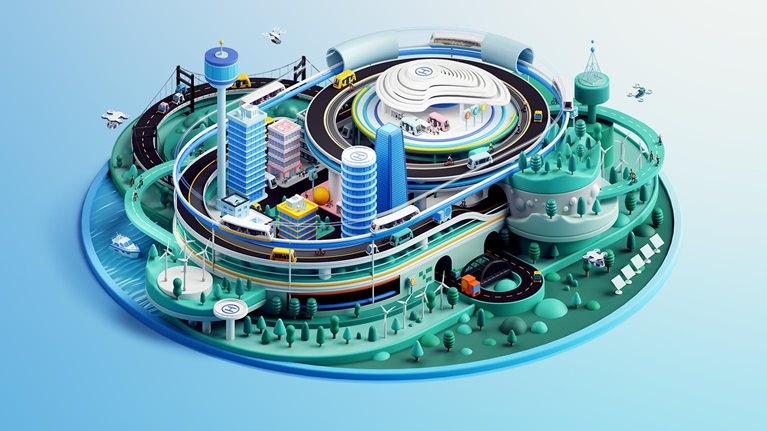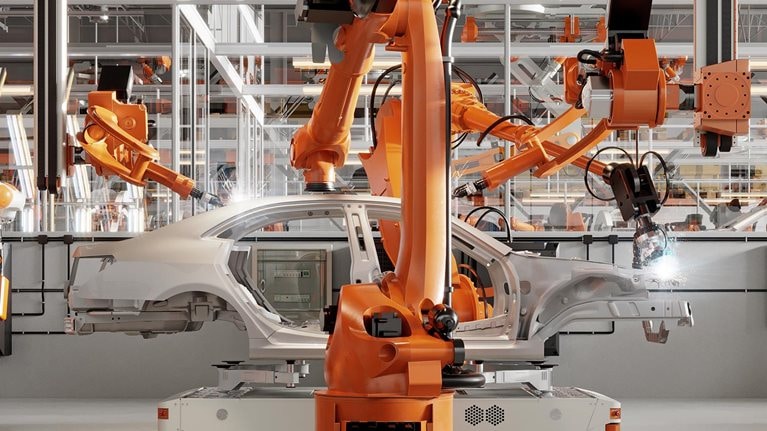Over the past few decades, industrial automation has evolved gradually, with few changes in market structure. But the pace of change is accelerating, thanks to technology disruptions and macrotrends such as reshoring, a global skilled labor shortage, and environmental, social, and governance (ESG) efforts.
Is the day likewise coming when software-defined manufacturing will turn shop floors into “smartphones with robotic arms”? A scenario analysis by McKinsey suggests the answer is yes.
According to our analysis, many of today’s most advanced manufacturing technologies—such as digital twins, robots capable of teaching themselves, and devices that can do their own programming—will be commonplace in the future. These trends will enable a “software-defined” paradigm for industrial automation.
It is harder to predict when this new future will arrive. It may come in 15 years, but it also may come in five years, depending on the speed of technological advances and their adoption in different industrial sectors.
The report identifies four vendor archetypes - hyperscalers; automation players, including machinery equipment manufacturers; software players; and specialized players – and shows how each of their strategies are evolving. Of the four archetypes, hyperscalers, or cloud-service providers that have already disrupted other industries, are changing industrial automation the most. Hyperscalers are moving into the embedded software and hardware part of the automation stack and are starting to grab a larger share of industrial automation spending. At an estimated 18 percent, the market for connectivity and industrial IoT (IIoT) will grow faster than any other part of the industrial automation market. This is the key source of revenues for hyperscalers within industrial automation.
But no provider segment is static. Automation players, software players, and specialized players—a cohort that includes system integrators—are all making investments in parts of the digital stack they don’t currently occupy. (See Exhibit 1)

This report goes into detail on the following points:
- Automation users’ perceptions. Ninety-four percent of the users participating in our survey said digital solutions will be important to their automation efforts in the future. Users’ focus in the past few years has shifted away from self-developed digital solutions that often did not go beyond learning exercises. Fifty-four percent of manufacturing companies now use OEM partnerships in a bid to develop standardized industrial IoT platforms. That’s almost an eightfold increase since 2019.
- Game-changing technologies. Soft programmable logic controllers (PLCs), digital twins, and teach-less robotics are among the ten key technologies that are ushering in the future of automation. The report describes how the key technologies will revolutionize factory operations. It also identifies the inflection points that may cause the technologies to take off. For instance, advances in connectivity and data exchange protocols would likely spur the growth of soft PLCs; rising labor costs would drive more development and interest in teach-less robotics; and AI is a strong enabler of almost all ten key technologies.
- Two potential scenarios. There are two scenarios for the future of industrial automation that basically differ by the speed at which technology will be adopted. The first, more likely scenario is one of gradual market development. However, a second scenario—involving a much faster transition—is also possible and would necessitate dramatic changes for both suppliers and manufacturing plants by 2030. (See Exhibit 2)

- Potential courses of action for those in industrial automation. Different players in industrial automation can do quite a few things today to prepare for the future. Hyperscalers might expand their domain know-how and set up partnerships with established automation players and system integrators. Automation players might consider moving up the technology stack, strengthening their positions in software and in cloud or IoT platforms. And automation users—the manufacturing plants themselves—may want to take steps to expand their digital capabilities, since they will need these capabilities no matter what comes and when.
Technical developments and new competitors are altering the shape of the industrial automation market. While no one can say for sure how it will play out, there are definite steps that all automation players can take now to position themselves for the future. It’s about making selective bold moves while preserving options. The companies that manage this feat in the coming years will be the ones that lead the way in industrial automation.

